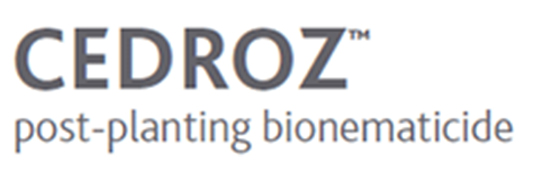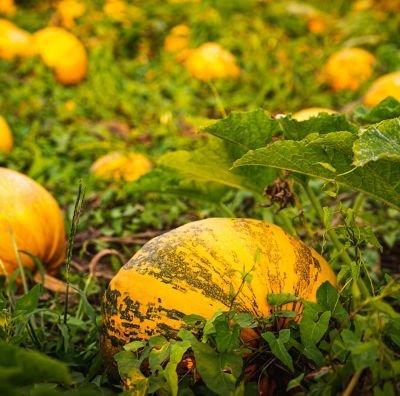
In vitro bioassay of Cedroz versus Meloidogyne incognita
The objective of the in vitro bioassay was to verify the nematicidal and/or nematistatic efficacy of Cedroz against the larvae of second-stage juveniles (L2) of the root-knot nematode Meloidogyne incognita.
Step 1: Inoculum production (L2)
- Mature egg mass from roots of tomato plants of the farms of the Emilia-Romagna region of Italy
- Dipped in water for seven days to obtain peers of seven-day-old larvae
Step 2: Placement of the L2 larvae in the wells
- Ten to 12 L2 in 1 mL of aqueous solution of Cedroz
- Assayed concentrations (mL/L): 2–2, 50–4, 0–5.00
- The wells were closed with a glass lid and sealed with silicone to contain the dispersion of volatile substances and incubate at room temperature.
- In each test, three replicates were performed for each concentration and for each test time (24–48 hr). A total of 24 wells were set up, including witnesses (UTC).
Step 3: Assessments — vitality of the larvae L2
- Direct observation under a stereomicroscope after 24 and 48 hours of immersion in aqueous solution of Cedroz
- The immobile larvae were transferred to distilled water and observed after 24 and 48 hours.
- Recovery of mobility (nematistatic effect)
- Mortality (nematicidal effect)
Table 1. The effect of Cedroz on nematode mobility and mortality
| After 24 hr with Cedroz | |||
|---|---|---|---|
| [c] | Immobile | After 24 hr in water | |
| mL/L | Staticity | Mobility | Immobile (mortality) |
| 2.00 | 66.67 | 6.67 | 60.00 |
| 2.50 | 93.33 | 0.00 | 93.33 |
| 4.00 | 90.00 | 0.00 | 90.00 |
| 5.00 | 100.00 | 0.00 | 100.00 |
| After 48 hr with Cedroz | |||
|---|---|---|---|
| [c] | Immobile | After 24 hr in water | |
| mL/L | Staticity | Mobility | Immobile (mortality) |
| 2.00 | 73.33 | 3.33 | 70.00 |
| 2.50 | 100.00 | 0.00 | 100.00 |
| 4.00 | 100.00 | 0.00 | 100.00 |
| 5.00 | 100.00 | 0.00 | 100.00 |
Conclusion
Cedroz has shown a prevalent nematicidal activity against J2 of the root-knot nematode Meloidogyne incognita in all in vitro bioassays.

A. Infectivity of J2s exposed to Cedroz
Step 1: 400 M. incognita juveniles (J2) were treated with the LD50 of Cedroz (1.5 mL/L); after 24 hours, ± 200 living, moving J2s were recovered.
Step 2: Three-week-old tomato plants (cv. Moneymaker) were inoculated with 200 moving J2s recovered from either Cedroz at its LD50 (1.5 mL/L) or a tap water control.

Figure 1. Cedroz vs. control galls per root

Figure 1 illustrates that tomato plants treated with Cedroz exhibited fewer than half the number of galls per root system compared to the control group.
Conclusion
Nematodes that survived Cedroz exposure were much less infectious, as indicated by the number of galls after three weeks (p < 0.001, N = 6).
B. Activity on mass eggs on RKN (Dr. Curto)
Cedroz in contact with the egg masses for a period of seven days proved capable of inhibiting the hatching of second-age J2 larvae. Therefore, there was a temporary inhibition in the presence of the solution with Cedroz or due to the inability of the product to penetrate the eggs. Further studies are underway to check the activity on the individual egg.
Table 2. Results of the activity of Cedroz on the hatching of eggs contained in the egg sack of Meloidogyne incognita
| [c] mL/L |
After 7 days n°J2 |
||
|---|---|---|---|
| Total | J2 mobile | J2 immobile | |
| a | b | c | |
| 10 | 0.00 | 0.00 | 0.00 |
| 5 | 4.75 | 1.25 | 3.50 |
| 2.5 | 37.75 | 24.75 | 13.00 |
| 1.25 | 54.00 | 47.25 | 6.75 |
| 0.625 | 110.00 | 108.75 | 1.25 |
| 0.315 | 112.75 | 112.50 | 0.25 |
| 0 | 104.50 | 104.25 | 0.25 |
| [c] mL/L |
After 7 days in water n° eggs n° J2 |
|||
|---|---|---|---|---|
| Total | L2 mobile | L2 immobile | ||
| d | e | f | g | |
| 10 | 84.25 | 41.40 | 35.75 | 5.75 |
| 5 | 43.00 | 53.00 | 51.75 | 1.25 |
| 2.5 | 50.00 | 87.00 | 83.50 | 3.50 |
| 1.25 | 15.25 | 83.25 | 79.25 | 4.00 |
| 0.625 | 58.00 | 70.25 | 66.25 | 4.00 |
| 0.315 | 40.75 | 51.00 | 51.00 | 0.00 |
| 0 | 36.25 | 12.75 | 12.75 | 0.00 |
| [c] mL/L |
Development n° eggs/egg sack % hatched |
||
|---|---|---|---|
| (a+d+e) | After 7 days | After 14 days | |
| h | A*100/h | (a+e)*100/h | |
| 10 | 125.75 | 0.00 | 33.00 |
| 5 | 100.75 | 4.71 | 57.32 |
| 2.5 | 174.75 | 21.60 | 71.39 |
| 1.25 | 152.50 | 35.41 | 90.00 |
| 0.625 | 238.25 | 46.17 | 75.66 |
| 0.315 | 204.50 | 55.13 | 80.07 |
| 0 | 153.50 | 68.08 | 76.38 |
Certain statements may not be applicable in all geographical regions. Product labeling and associated claims may differ based on government requirements.







